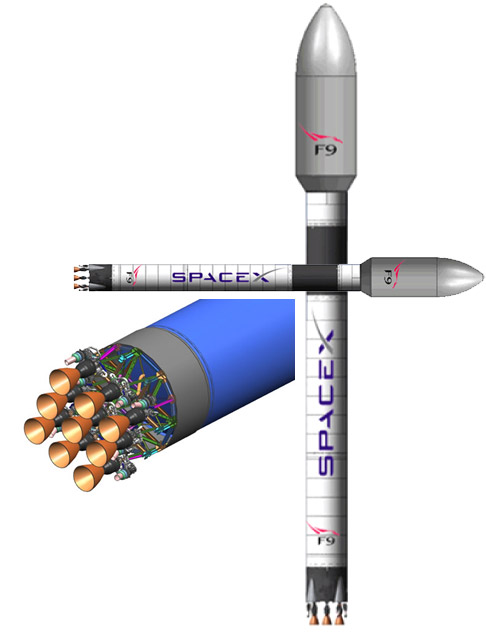|
COMPARE: SpaceX // Falcon-9
HAWTHORNE, CA — November 23, 2008 — Space Exploration Technologies Corp. (SpaceX) successfully conducted a full mission-length firing of its Falcon 9 launch vehicle's first stage at its McGregor Test Facility in Texas, on November 22. For the static test firing, the first stage remains firmly secured to the massive vertical test stand, where it fired for 178 seconds or nearly three minutes — simulating the climb of the giant rocket from the surface of the Earth towards orbit. At full power, the rocket generated 855,000 pounds of force at sea level. In vacuum, the thrust increases to approximately one million pounds or four times the maximum thrust of a 747 aircraft. The test consumed over half a million pounds of propellant. All nine engines fired for 160 seconds, then two engines were shut down to limit the acceleration and the remaining seven engines continued firing for 18 more seconds, as would occur in a typical climb to orbit. The Falcon 9 will be the first vehicle since the Saturn V and Saturn 1 to have the ability to lose any engine/motor and still be able to complete its mission without loss of crew or spacecraft. Engine out reliability proved crucial to mission success on two of the Saturn V flights (pto).
SpaceX // Falcon-9

http://spacex.com/falcon9.php
|

